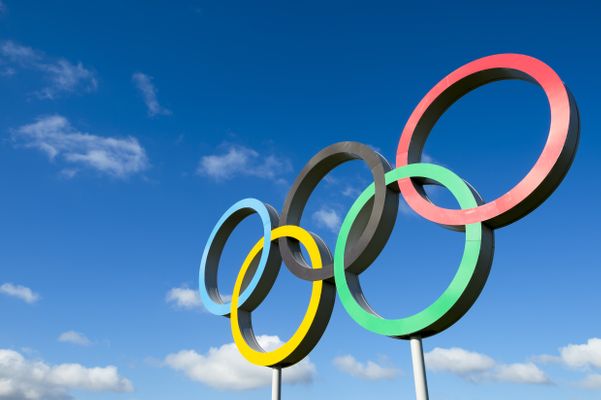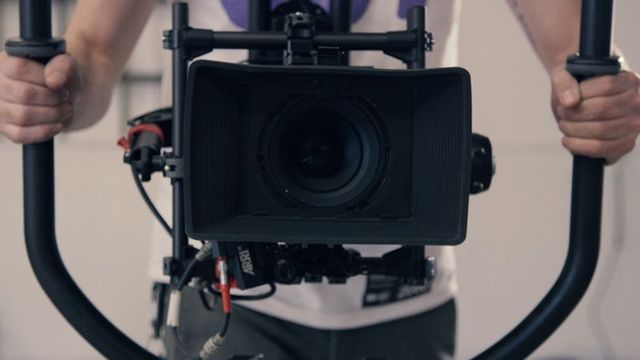2.1.5
Propaganda
Mechanisms of Propaganda
Mechanisms of Propaganda
Different historians have drawn different conclusions about how successful Nazi propaganda was, although different forms of propaganda would have had different impacts.


Organisation
Organisation
-Goebbels headed Nazi Germany’s propaganda machine.
- It had 3 parts: the RMVP (Reich Ministry for Popular Enlightenment and Propaganda); the Reich Chamber of Culture; and the NSDAP Central Propaganda Office.
- The RMVP controlled propaganda, arts and entertainment
- The Reich Chamber for Culture was to promote Germanic, Völkisch culture. Membership was compulsory for anyone involved in arts, culture or the media.


Methods of control
Methods of control
- The RMVP controlled all aspects of the media and the arts in a variety of ways:
- Direct or part ownership.
- Controlling those who could work in the media and the arts.
- Overseeing what the media and the arts produced.
- Dealing with non-conformists.
- Licenses were issued to approved writers, artists, musicians etc and could be revoked. Without a license, you could not work.
- The RMVP gradually bought shares in German film production companies.
Forms of Propaganda
Forms of Propaganda
The Nazi propaganda machine, under Goebbels, was very pervasive. Everyone was exposed to Nazi propaganda.


Radio
Radio
- In April 1934 the Nazis created a unified German radio system and purged it of all the usual undesirable elements. It controlled all radio content.
- Cheap radios were subsidised by the Nazi party. They had limited range and only picked up one station.
- By 1939, 70% of German households owned one.
- Most output was light entertainment or news.
- Every district and a loud speakers to broadcast speeches by Nazi leaders.


Printed Word
Printed Word
- Book burnings were not effective but were highly symbolic.
- Books burned included all Jewish authors, left wing, liberal, democratic works, traitors, foreigners or anything deemed to denigrate the German Volk.
- The Reich Association of the German Press had lists of acceptable editors and journalists.
- The RMVP controlled content through the Press Agency.
- Local newspapers were harder to control but the Nazis’ publishing firm, Eher Verlag, took over most titles. In 1939 they controlled 69% of newspapers.


The Arts
The Arts
- Visual art:
-Artwork portrayed superior, heroic Aryans or idyllic family life.
- Landscapes often showed rural Volk and the land they worked (‘Blood and Soil’).
- Degenerate art was banned, including abstract, surreal art and artists like Van Gogh, Picasso as well as work by communists, Jews etc.
- Architecture:
- Public buildings were to be a lasting memorial to the 1000 Year Reich. Both their outside and inside space would be experienced by thousands daily.


Sport, rallies and festivals
Sport, rallies and festivals
- Nuremberg rallies were filmed and shown on newsreels. It was hoped people would be fired with enthusiasm for Nazism. They were addressed by Hitler.
- Festivals celebrating key dates in Nazi history were introduced, such as Nazis seizure of power (30 January), Hitler’s birthday (20 April) and the Munich Putsch (9 November).
- Adam (1992)
- ‘Few politicians have produced such adoration, even hysteria, as Hitler.’
- The 1936 Berlin Olympics were an international propaganda opportunity.


Films
Films
- Film was not usually overtly used as propaganda. Its value was in keeping the masses entertained. There were newsreels before all feature films however were full of propaganda.
- About one sixth of feature films were propaganda e.g. Jud Süss (1940).
- Leni Riefenstahl was the most famous producer. She also made films of festivals, rallies like Triumph of the Will (1935) about the Nuremberg Rally and Olympia (1938) about the 1936 Berlin Olympics.


Historical assessment
Historical assessment
- Comparative historical work on authoritarian regimes in recent years has shown that Nazi propaganda was made effective because it was coupled with economic growth.
- Paul Corner (2009) argues that authoritarian regimes had to 'legitimate themselves through results.' There would always be a gap between the image of life projected by propaganda and the reality of life in Nazi Germany but the real material rewards that the Nazis were able to give the German people helped them to reconcile this 'gap'.
1The Weimar Republic 1918-1933
1.1Establishment Of The Weimar Republic 1918-1924
1.1.1Post WW1
1.1.2Weimar Constitution
1.1.3Peace Settlement
1.1.4End of Topic Test - Germany Post WW1
1.1.5Economic Issues
1.1.6Economic Issues 2
1.1.7Social Issues
1.1.8End of Topic Test - Economic & Social Issues
1.1.9Extremist Threats
1.1.10Extremist Threats 2
1.1.11End of Topic Test - Extremist Threats
1.1.12Political Instability & The Invasion of the Ruhr
1.1.13Weimar Government by 1924
1.1.14End of Topic Test - Weimar Government by 1924
1.1.15A-A* (AO3/4) - Germany Post WW1
1.2The 'Golden Age' Of The Weimar Republic 1924-1928
1.2.1Economic Developments
1.2.2Industry & Agriculture
1.2.3End of Topic Test - Economic Developments
1.2.4Social Developments
1.2.5Social Developments 2
1.2.6End of Topic Test - Social Developments
1.2.7Political Parties
1.2.8Political Stability
1.2.9End of Topic Test - Weimar Politics
1.2.10Germany's International Position
1.2.11Germany's International Position 2
1.2.12End of Topic Test - International Position
1.2.13A-A* (AO3/4) - The Weimar 'Golden Age'
1.3The Collapse of Democracy 1928-1933
1.3.1The Impact Of The Depression
1.3.2Politics After The Depression
1.3.3The Appeal Of Extremism
1.3.4End of Topic Test - The Depression & Politics
1.3.5'Backstairs Intrigue'
1.3.6'Backstairs Intrigue' 2
1.3.7End of Topic Test - Backstairs Intrigue
1.3.8Political Developments
1.3.9The State by March 1933
1.3.10End of Topic Test - Political Developments
1.3.11A-A* (AO3/4) - The Collapse of Democracy
2Nazi Germany 1933-1945
2.1The Nazi Dictatorship 1933-1939
2.1.1Hitler's Consolidation Of Power
2.1.2The Terror State
2.1.3End of Topic Test - Consolidation of Power
2.1.4Opposition
2.1.5Propaganda
2.1.6A-A* (AO3/4) - Terror State & Propaganda
2.1.7End of Topic Test - Propaganda
2.1.8Economic Policies
2.1.9Economic Policies 2
2.1.10Impact Of Economic Policies
2.1.11Impact Of Economic Policies 2
2.1.12End of Topic Test - Economic Policies
2.1.13Social Policies
2.1.14Social Policies 2
2.1.15Volksgemeinschaft
2.1.16End of Topic Test - Social Policies
2.1.17A-A* (AO3/4) - Economic & Social Policies
2.2The Racial State 1933-1941
2.2.1The Radicalisation Of The State
2.2.2Anti-Semitism
2.2.3Development Of Anti-Semitic Policies
2.2.4Development Of Anti-Semitic Policies 2
2.2.5End of Topic Test - Anti-Semitism
2.2.6Treatment of the Jews in the Early Years of War
2.2.7Deportation & Anti-Semitism Evaluation
2.2.8End of Topic Test - Early Treatment of the Jews
2.2.9A-A* (AO3/4) - The Racial State
2.3The Impact Of War 1939-1945
2.3.1Home Front
2.3.2Impact On Society
2.3.3Impact On Society 2
2.3.4End of Topic Test - Impact of the War
2.3.5War Economy
2.3.6War Economy 2
2.3.7Policies Towards The Jews & Untermenschen
2.3.8A-A* (AO3/4) - Impact of the War
2.3.9End of Topic Test - War Economy
2.3.10Opposition
2.3.11Opposition 2
2.3.12Nazi State by 1945
2.3.13End of Topic Test - Opposition
2.3.14A-A* (AO3/4) - Opposition & The State in 1945
Jump to other topics
1The Weimar Republic 1918-1933
1.1Establishment Of The Weimar Republic 1918-1924
1.1.1Post WW1
1.1.2Weimar Constitution
1.1.3Peace Settlement
1.1.4End of Topic Test - Germany Post WW1
1.1.5Economic Issues
1.1.6Economic Issues 2
1.1.7Social Issues
1.1.8End of Topic Test - Economic & Social Issues
1.1.9Extremist Threats
1.1.10Extremist Threats 2
1.1.11End of Topic Test - Extremist Threats
1.1.12Political Instability & The Invasion of the Ruhr
1.1.13Weimar Government by 1924
1.1.14End of Topic Test - Weimar Government by 1924
1.1.15A-A* (AO3/4) - Germany Post WW1
1.2The 'Golden Age' Of The Weimar Republic 1924-1928
1.2.1Economic Developments
1.2.2Industry & Agriculture
1.2.3End of Topic Test - Economic Developments
1.2.4Social Developments
1.2.5Social Developments 2
1.2.6End of Topic Test - Social Developments
1.2.7Political Parties
1.2.8Political Stability
1.2.9End of Topic Test - Weimar Politics
1.2.10Germany's International Position
1.2.11Germany's International Position 2
1.2.12End of Topic Test - International Position
1.2.13A-A* (AO3/4) - The Weimar 'Golden Age'
1.3The Collapse of Democracy 1928-1933
1.3.1The Impact Of The Depression
1.3.2Politics After The Depression
1.3.3The Appeal Of Extremism
1.3.4End of Topic Test - The Depression & Politics
1.3.5'Backstairs Intrigue'
1.3.6'Backstairs Intrigue' 2
1.3.7End of Topic Test - Backstairs Intrigue
1.3.8Political Developments
1.3.9The State by March 1933
1.3.10End of Topic Test - Political Developments
1.3.11A-A* (AO3/4) - The Collapse of Democracy
2Nazi Germany 1933-1945
2.1The Nazi Dictatorship 1933-1939
2.1.1Hitler's Consolidation Of Power
2.1.2The Terror State
2.1.3End of Topic Test - Consolidation of Power
2.1.4Opposition
2.1.5Propaganda
2.1.6A-A* (AO3/4) - Terror State & Propaganda
2.1.7End of Topic Test - Propaganda
2.1.8Economic Policies
2.1.9Economic Policies 2
2.1.10Impact Of Economic Policies
2.1.11Impact Of Economic Policies 2
2.1.12End of Topic Test - Economic Policies
2.1.13Social Policies
2.1.14Social Policies 2
2.1.15Volksgemeinschaft
2.1.16End of Topic Test - Social Policies
2.1.17A-A* (AO3/4) - Economic & Social Policies
2.2The Racial State 1933-1941
2.2.1The Radicalisation Of The State
2.2.2Anti-Semitism
2.2.3Development Of Anti-Semitic Policies
2.2.4Development Of Anti-Semitic Policies 2
2.2.5End of Topic Test - Anti-Semitism
2.2.6Treatment of the Jews in the Early Years of War
2.2.7Deportation & Anti-Semitism Evaluation
2.2.8End of Topic Test - Early Treatment of the Jews
2.2.9A-A* (AO3/4) - The Racial State
2.3The Impact Of War 1939-1945
2.3.1Home Front
2.3.2Impact On Society
2.3.3Impact On Society 2
2.3.4End of Topic Test - Impact of the War
2.3.5War Economy
2.3.6War Economy 2
2.3.7Policies Towards The Jews & Untermenschen
2.3.8A-A* (AO3/4) - Impact of the War
2.3.9End of Topic Test - War Economy
2.3.10Opposition
2.3.11Opposition 2
2.3.12Nazi State by 1945
2.3.13End of Topic Test - Opposition
2.3.14A-A* (AO3/4) - Opposition & The State in 1945
Unlock your full potential with Seneca Premium
Unlimited access to 10,000+ open-ended exam questions
Mini-mock exams based on your study history
Unlock 800+ premium courses & e-books